It’s a great time to be building digital products. The in-app, digital experience has never been a more important part of the customer journey than it is today. And the teams that build these experiences—product managers, UX, designers, engineers—are gaining more influence and strategic importance at their companies.
But I’m not just talking about software companies: The fortune 500 are establishing product teams and chief product officers (CPOs) at a record pace. Regardless of the product you sell, today it’s software that connects your product to the world.
It’s also a really turbulent time for these teams. Challenges like the pandemic, macroeconomic headwinds, and generative AI have put more pressure on product teams. “Increase retention, create more opportunities for monetization, reduce operating costs, and do it all with less people.” I’ll bet you’re hearing a version of this from the C-suite.
This means driving business impact has to be part of your team’s process from the very beginning. There needs to be a direct line of sight to how the product org is growing revenue, reducing costs, mitigating risk, or improving loyalty and retention—and likely doing so with less resources.
The power of the Product Management Life Cycle
Although this can feel daunting, at Pendo, we think product organizations should embrace this shift. Beginning with a business objective and using it as an anchor for product development increases your focus, allows you to deliver more value to users, and helps you gain more of a seat at the table internally.
This is the thinking behind the Product Management Life Cycle: A cyclical framework for conceptualizing, building, launching, and iterating on software products.
Let’s say your current strategic focus as a business is reducing churn. This is an objective that you can “load up” into the life cycle. It will then impact your discovery efforts, change how you validate solutions, inform the launch, and help define the metrics you use to evaluate success. If this is all done well, it’ll also have a big impact on your ability to achieve the outcome.
Throughout the rest of this post, I’ll share our take on the life cycle and how you can leverage Pendo to succeed at each phase.
Phase 0: Define a business outcome
While growing your business is incredibly complicated, how it happens is relatively simple. You can increase revenue, reduce costs, or improve how you operate. Translating this focus into product-specific goals is more difficult.
At Pendo, we’ve found that most product teams have a sense of what they need to improve in their applications, but it helps to see how that work rolls up into larger business outcomes. For example, you may know that you need to improve in-app onboarding, but aren’t sure how to connect that to the business impact—which is mostly likely retention.
The best way to have an impact on your business is to flip this thinking. Start with the strategic priority—increasing retention—then define your product priorities that will lead to that outcome. This is why a critical first step in the Product Management Life Cycle (what I like to call Phase 0) is to determine the business outcome you want to achieve. From there, you’ll be ready to move on to Phase 1: Discovery.
フェーズ1:発見
Discovery is all about understanding the pain points of your customers and the larger market. And while it’s best to ask open-ended questions and go in without assumptions, this can lead to a lot of noise. Instead, attack the discovery phase with more focus by only digging into issues related to your business outcome.
Let’s go back to that original business outcome—increasing retention. Here’s how that might that shape your discovery questions:
- What are customers actually trying to accomplish?
- What do users’ workflows look like?
- Where do users who don’t retain fall out of the product?
- What do more successful users do differently?
Ideally, you’ll collect data from diverse sources so you can pattern match and triangulate the biggest challenges that are blocking your outcome. Historically this meant talking to a lot of users and internal teams. That’s still important, but product usage data and qualitative customer feedback is also an extremely important—and relatively new—part of this step.
Product usage data will illuminate if people are using your product, which features, where they drop off from key workflows, what different segments do differently, and much more. It’s a great place to start discovery. It’ll bring data to your decision making process and make it easier to know if the qualitative data you gather is signal or noise.
Customer feedback, especially feedback captured in-app and at scale, is also a great discovery tool. What better way to uncover retention issues than verbatim ideas and commentary from customers while they are using the product?
Bonus: Once you’ve done good discovery work, you can use Pendo to test the hypothesis that you’ve developed. Data Explorer is a custom report builder in Pendo that allows you to drill down into your product usage data and start to validate your ideas.
Pendo についてもっと詳しく知りたいですか?セルフガイドツアーをお試しください。
第2段階:検証
Great discovery isn’t perfect. Even when done well, you’ll have a number of potential solutions to the problems that you uncovered. Taking the time to ensure the idea you invest in is the right one isn’t something all product teams spend a lot of time on. However, it’s extremely important. You can always improve a product, but the closer you get to being right at first, the less developer resources you waste and the faster you’ll achieve your business outcome.
There are many ways to validate your product ideas, the best being talking to users and walking them through a potential solution. But although this is the ideal tactic, it is limiting—mainly because it’s hard to get a lot of this feedback without moving very slowly. The teams that skip validation usually do so because it’s too time consuming.
The solution? Supplement one-to-one customer conversations with validation from other inputs. This might include:
- Product usage data
- In-app surveys or polls, such as Pendo’s Validate tool
- Market research and surveys
- Willingness to pay surveys, like the Van Westendorp Pricing Analysis
- Support tickets or product feedback votes
Regardless of the methods you choose, don’t skip the validation step. It’s how you’ll guarantee that customers will find value in what you deliver. It’ll also help ensure you don’t waste engineering and design time as you get to the next phase: Build.
第3段階:開発
For product managers (PMs), a large part of the Build phase is working to define the scope, work, and deliverables so that engineering, design, product operations, and others can do their best work. That execution can vary from company to company, so I’m instead going to focus on an important—but albeit more complicated—role the PM plays: defending the roadmap.
By this point, you’ve put a lot of work into defining your roadmap and it’d be a shame if an influential VP of sales came in and disrupted the build process with a request that “has to” make it into the first iteration. Unfortunately this happens all too often. Most product managers combat this and other roadmap disruptions with a constant “roadmap roadshow,” usually in the form of a slide deck. They join leadership meetings to share research, justify their approach, and communicate plans. This is effective, but time consuming—not to mention slide decks lack detail and become stale quickly.
The better approach is to provide visibility into progress and learnings (think: dashboards), and share a roadmap that (ideally) can be updated quickly or automatically. The roadmap can then be shared as a single source of truth for a given product area. Here are three ways to do this with different levels of manual work:
- Spreadsheets and slide decks that require heavy manual work to keep updated
- Project management software like Monday.com that includes GANTT charts
- A software tool like Pendo Roadmaps that helps you track your backlog, manage builds, and connect product efforts to business impact
第4段階:リリース
Aligning all of your sales, marketing, and communication efforts around the product release helps you break through the noise and better reach and influence your target audience. Call it a launch, release, or product readiness, this alignment and consolidated effort is key to your product or feature’s success. Product launches are typically thought of as a product marketing strategy, but they really start with the product team.
The product manager defines the timing and positioning of a product—two key ingredients to any launch. They also identify what features can be monetized (and which features shouldn’t) and provide guidance on what work will lead to retention. This is information that sales, marketing, and other partner teams need.
Product managers are also hyper-focused on ensuring users know about and start adopting what they’ve built. Communicating in-app increases this likelihood, making in-app guides essential to any great software launch.
With in-app guides, product teams unlock a powerful new communication channel to launch and drive adoption of products and features. Guides offer a simple, no code way to alert users to important information while they’re already engaged in the product. This could be as small as a tooltip that helps users quickly understand a button, or as complex as a multi-step onboarding guide that walks users through a complicated workflow.
第5段階:評価
Part of the magic of a continuous product development motion is that you can launch and iterate quickly. But in order to iterate, you first need to understand what’s working and what’s not. That means digging into product usage, user feedback, and what’s generating support tickets or slowing down sales and marketing.
Great PMs simultaneously evaluate products from multiple levels. For example, they might zoom in on specific user experience issues and work with design and engineering to improve the solution they launched. They might also zoom out to understand (and communicate) if their solution is impacting larger business goals.
Product usage data and customer feedback are two important tools for zooming in. Having a macro view of customer behavior, where people are getting stuck, or what actions users aren’t taking is key to evaluating if a product is “working.” Similarly, user feedback and tools like NPS can give you a sense of if you solved the problems you identified in the Discover phase.
Zooming out is a bit harder. The best approach is combining product usage data with other data sources. For example, connecting your CRM to your product analytics tool will help you understand if key accounts are using your products—-and why or why not. You may also need to push product analytics data out to your business intelligence tools, combining it with revenue data to uncover if you’re achieving those business objectives.
第6段階:反復
The best product teams have a strong and clear vision, but are also constantly iterating to improve the product and achieve business outcomes. You could go through the Evaluate phase and decide to stay the course, but it’s more likely that you’ll tweak your approach.
The biggest question to answer is, “Did the thing we build actually move the business outcome we thought it would?” Here are some other questions to ask at this stage:
- Do we need to tweak our goals or focus?
- Do we need to change our roadmap based on feedback?
- Should we double down on what’s really working?
- Is it time to sunset a product that is low ROI and causing issues?
- Is this actually moving us closer towards achieving our business goal?
Once you’ve defined what it is that needs to change, where do you go? Right back to the start of the life cycle. These are perfect topics to dig into with good product discovery.
I’ll end this blog post the same way I started it: It’s a great time to be building digital products. But in order to succeed long term, you can’t just build a great product. You must have an impact on the business, know how to do it, and prove that it’s working.
We hope this deep dive into the Product Management Life Cycle will help. If you want to learn more about how Pendo powers the life cycle from end-to-end, make sure to bring it up with your customer success team or schedule a personalized demo.
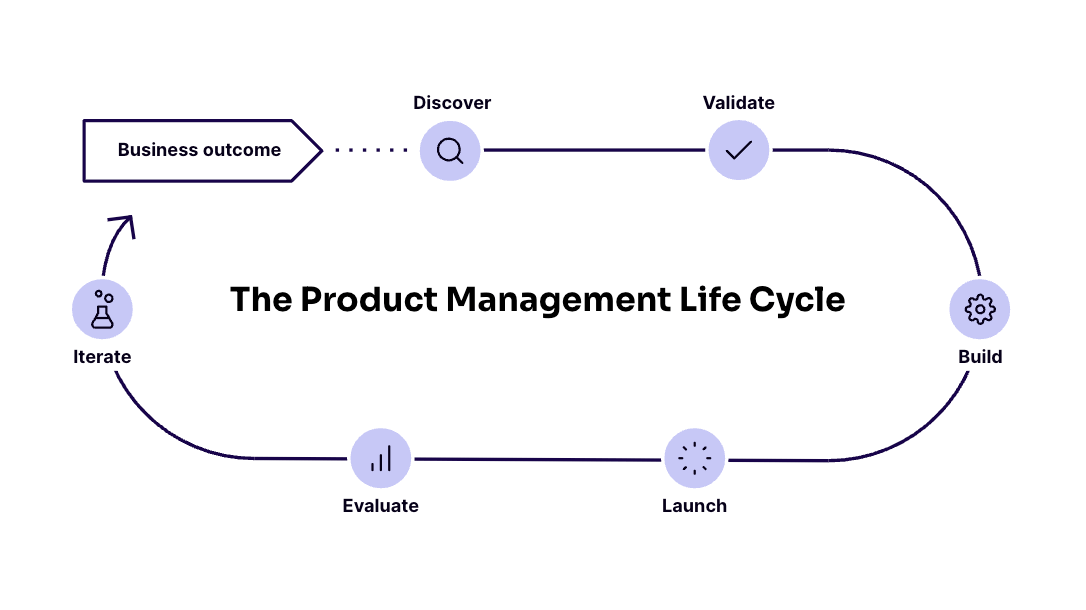
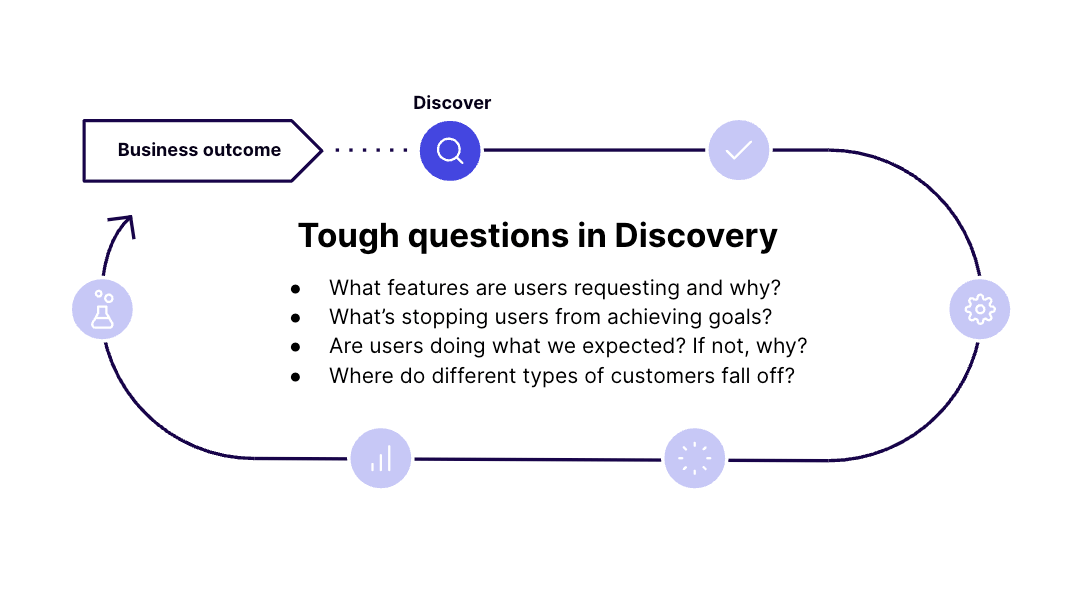
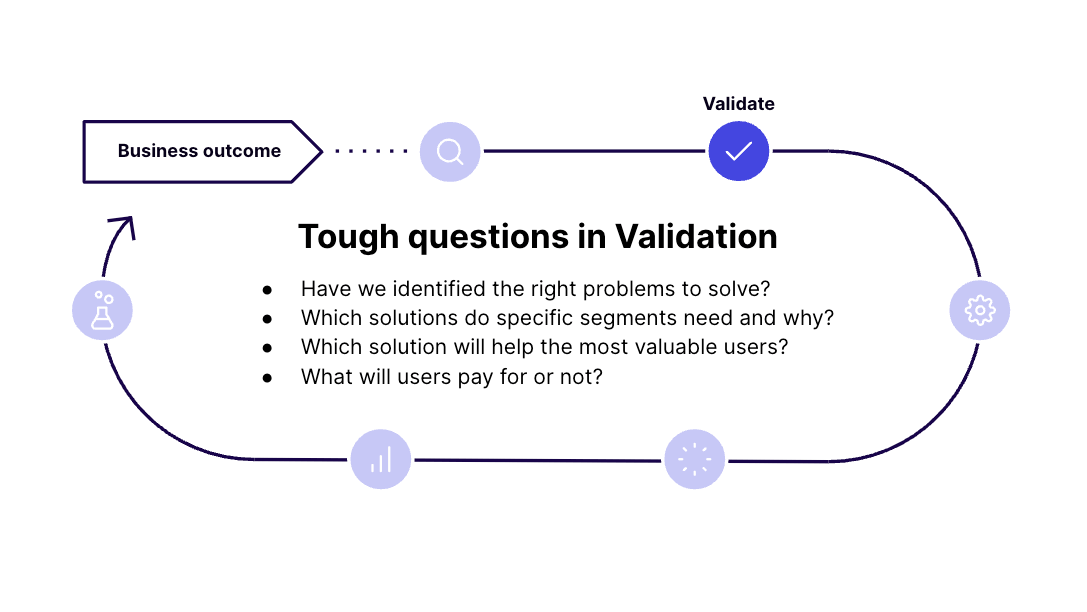
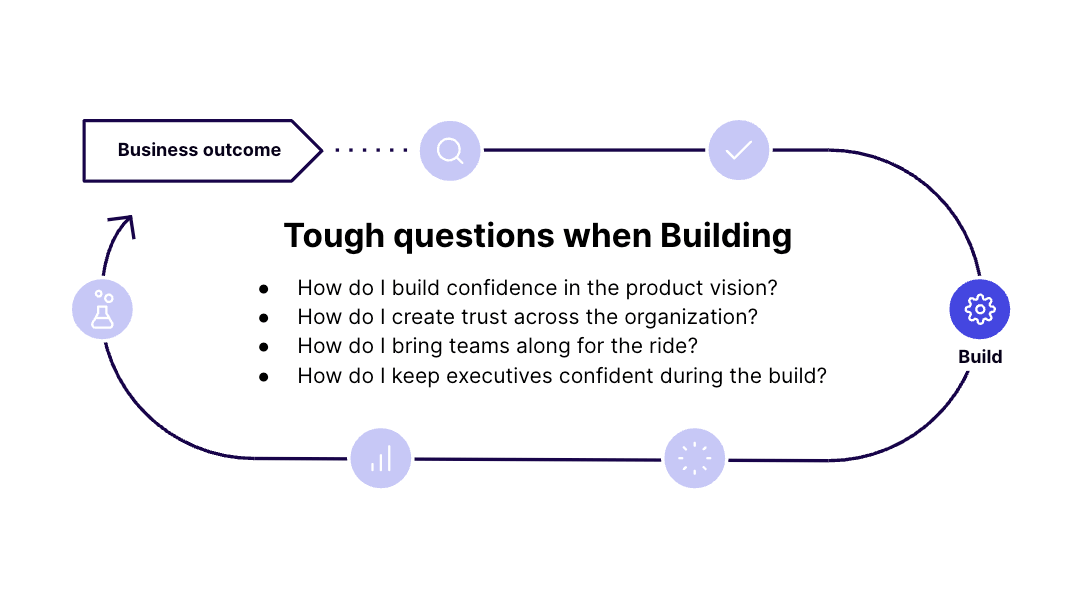
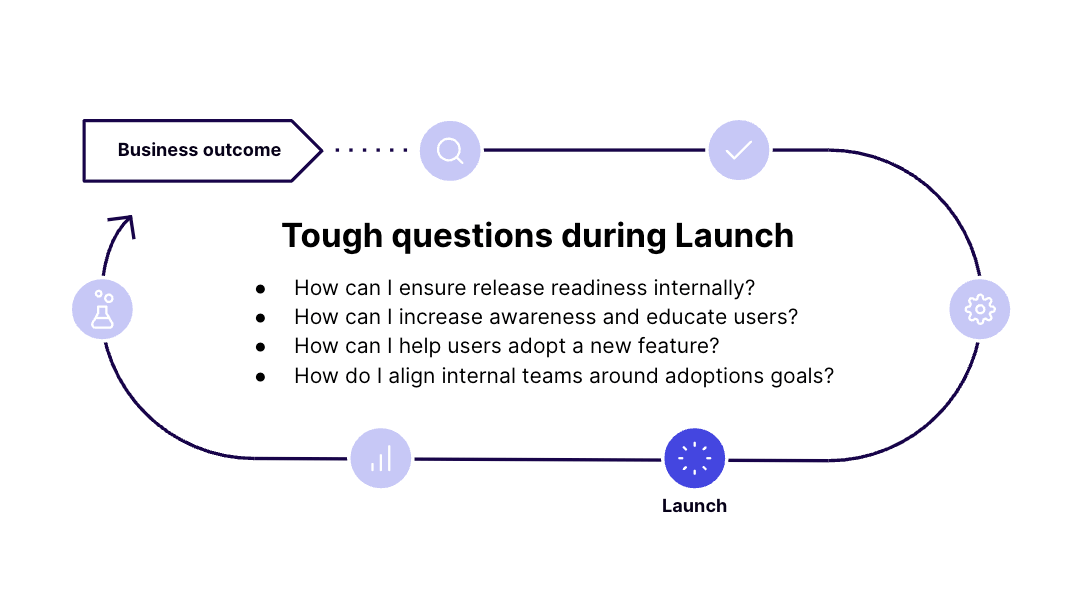
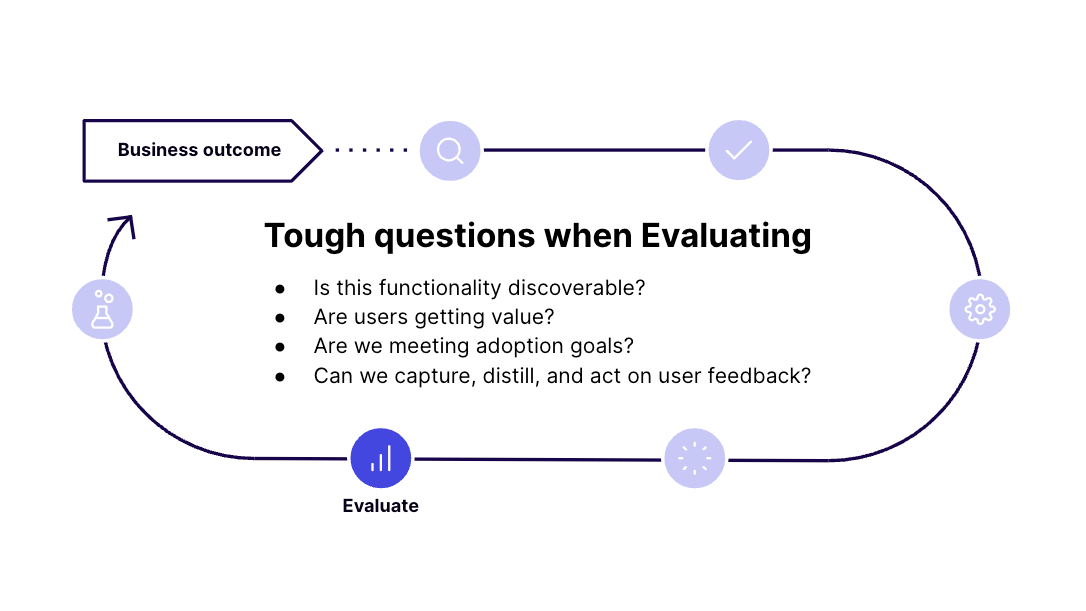
![[object Object]](https://cdn.builder.io/api/v1/image/assets%2F6a96e08774184353b3aa88032e406411%2F39f3ccde352b460cbf348ccc952054cd?format=webp)



